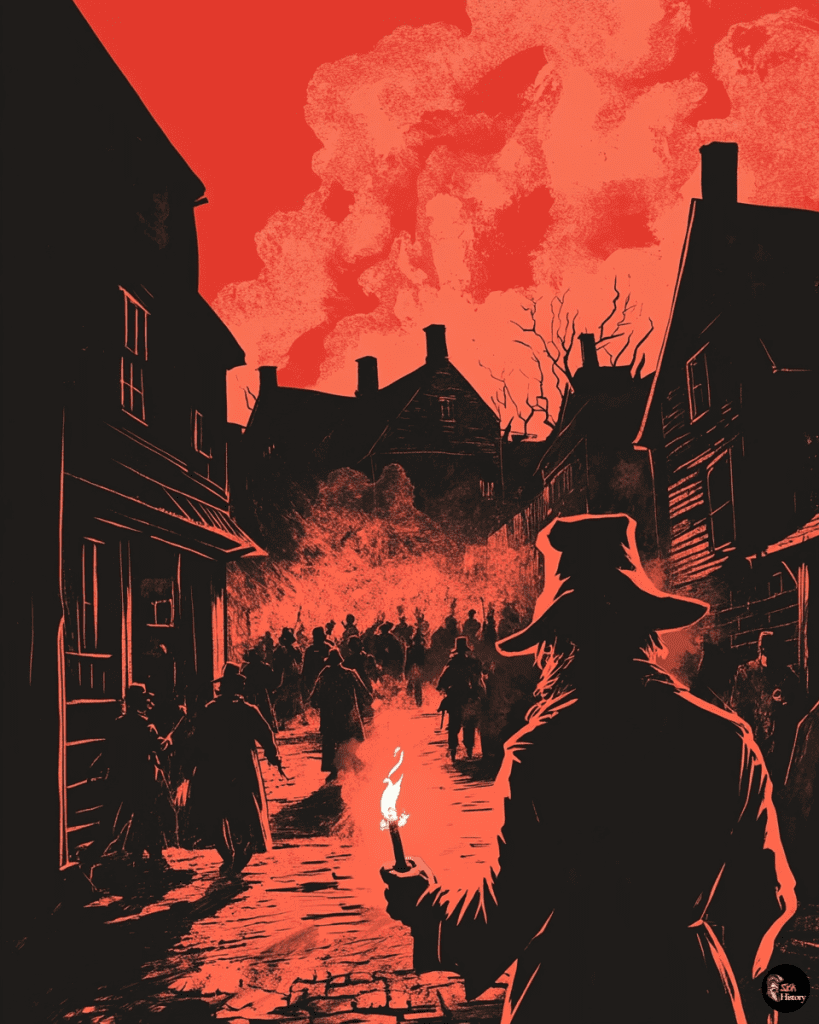On May 19, 1780, an extraordinary event known as the Dark Day of 1780 cast an eerie shadow over New England and parts of eastern Canada.
As the sun rose that morning, residents went about their daily routines, unaware of the apocalyptic atmosphere that would soon envelop them.
By noon, the skies had darkened to such an extent that candles were required to see, sending waves of fear and confusion through the populace.
The primary cause of this mysterious phenomenon is believed to have been a combination of smoke from forest fires, thick fog, and dense cloud cover.
This confluence of factors created a darkness so profound that it sparked widespread panic, with many believing the Day of Judgment had arrived.
Birds roosted, frogs began to croak, and farm animals returned to their barns, further adding to the surreal atmosphere.
Recent scientific investigations have shed new light on this historical enigma.
Tree ring analysis has provided compelling evidence supporting the forest fire theory, offering a fascinating glimpse into how natural events can profoundly impact human experiences and perceptions.
The Dark Day of 1780 serves as a poignant reminder of the power of nature and the enduring mystery of our world, even in the face of modern scientific understanding.
The Mysterious Phenomenon
On May 19, 1780, an extraordinary event plunged New England into unexpected darkness, sparking fear and confusion among its inhabitants.
This peculiar occurrence, known as the Dark Day, left a lasting impression on the region’s history and continues to intrigue researchers to this day.
Overview of the Dark Day
The Dark Day of 1780 was a phenomenon that affected New England and parts of eastern Canada. The sky darkened to such an extent that candles were needed at noon, creating an eerie atmosphere reminiscent of night.
This event caused widespread alarm among the populace. Many believed it to be a sign of divine judgment, while others sought scientific explanations.
The darkness was so complete that it disrupted daily activities and even caused birds to roost as if night had fallen.
Various theories emerged to explain the phenomenon, including:
- Forest fires
- Volcanic eruptions
- Solar eclipses
- Atmospheric anomalies
Chronology of Events on May 19, 1780
The day began with a reddish tinge to the sky, gradually darkening as the hours passed. By mid-morning, the darkness had intensified significantly, causing concern among New England’s inhabitants.
At noon, the darkness reached its peak. Candles were lit in homes and businesses, and farm animals behaved as if it were nighttime.
The unusual darkness persisted throughout the afternoon, with reports of it extending as far north as Portland, Maine, and as far south as New Jersey.
As evening approached, the sky began to clear in some areas. By the following morning, conditions had largely returned to normal, leaving behind a bewildered population and countless questions about the nature of this mysterious event.
Unveiling the Veil of Darkness
The Dark Day of 1780 remains one of New England’s most enigmatic historical events. Scientific analysis and traditional lore offer intriguing insights into this mysterious phenomenon that plunged the region into darkness.
Cause of the Dark Day
The New England Dark Day occurred on May 19, 1780, puzzling residents and scholars alike. Candles were necessary at noon as an eerie darkness descended upon the land.
Scientists have proposed several theories to explain this unusual event. A combination of factors likely contributed to the darkness, including smoke from forest fires, dense fog, and thick cloud cover.
The darkness extended from Maine to New Jersey, affecting a significant portion of the Eastern seaboard. It lasted from mid-morning until midnight, causing widespread confusion and concern among the populace.
Evidence From Tree Rings
Dendrochronology, the study of tree rings, has provided valuable insights into the Dark Day phenomenon. Researchers have examined tree ring samples from the period to gather evidence about environmental conditions.
Tree rings from 1780 often show signs of stress, indicating a significant environmental event. Narrow rings or abnormal growth patterns suggest a period of reduced sunlight or other adverse conditions.
This physical evidence supports the theory of widespread forest fires or other environmental factors that could have contributed to the Dark Day. The tree ring data helps corroborate historical accounts and scientific hypotheses.
The Role of Forest Fires
Forest fires are considered a primary contributor to the Dark Day phenomenon.
Extensive wildfires in Canada, particularly in Ontario, likely produced enormous amounts of smoke and ash.
Strong winds could have carried this smoke southward, creating a thick haze over New England. The combination of smoke particles and existing atmospheric conditions may have resulted in the unusual darkness.
Historical records mention drought conditions in the region, which would have made forests more susceptible to fires.
The scale of these fires must have been substantial to create such widespread and long-lasting effects.
Weather Patterns and Cloud Cover
Unusual weather patterns played a crucial role in the Dark Day event. A combination of fog, cloud cover, and smoke created ideal conditions for blocking sunlight.
Meteorological records from the time, though limited, suggest a convergence of weather systems. Low-pressure areas may have trapped smoke and particulates close to the ground, intensifying the darkness.
The prolonged nature of the event, lasting from morning until night, indicates a stable weather system that maintained these conditions throughout the day. This persistence contributed to the event’s notoriety and impact on the population.
Perspectives From Algonquin Lore
Algonquin traditions offer a unique perspective on the Dark Day.
Indigenous oral histories often preserve accounts of significant natural events, providing valuable insights.
Some Algonquin stories speak of a “day of darkness” or similar phenomena, potentially referring to this event or similar occurrences.
These narratives often intertwine natural observations with cultural interpretations.
Indigenous knowledge of the land and its patterns may have provided a different understanding of the event.
Exploring these perspectives can enrich our comprehension of the Dark Day and its impact on various communities in the region.

